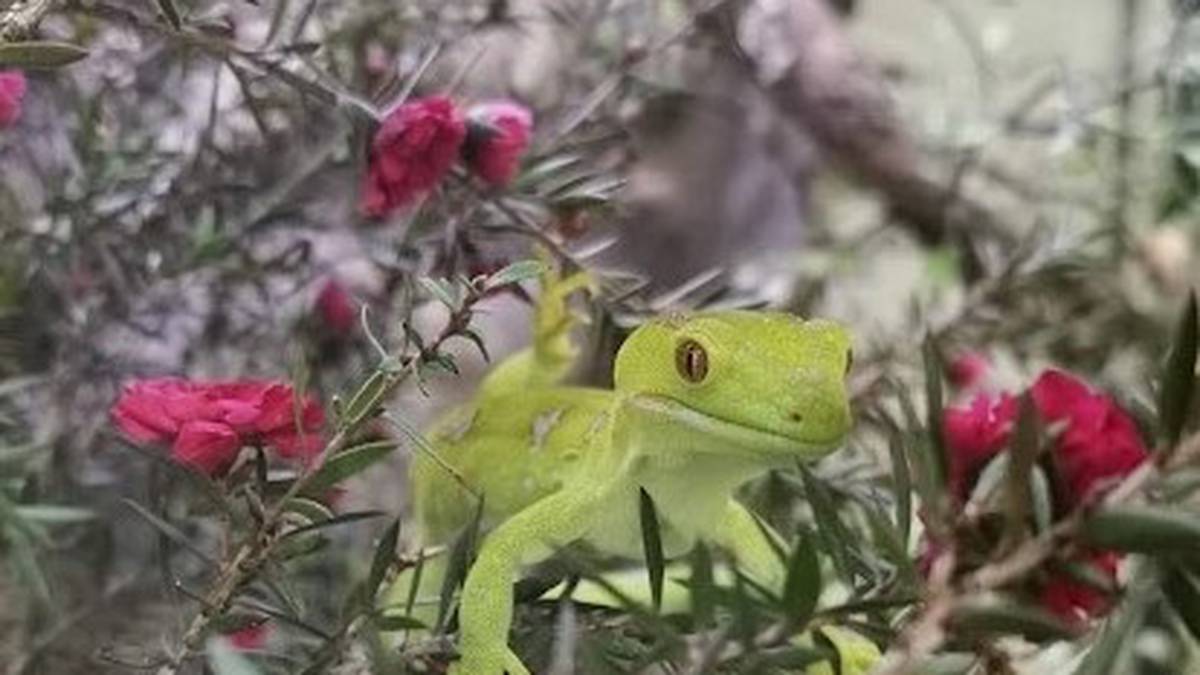Pounamu the Northland green gecko. Photo / Supplied
Did you know that New Zealand geckos give birth to live babies? There are more than 1500 species of geckos worldwide, living on every continent except Antarctica, but only the 48 species that live in New Zealand and those in New Caledonia give birth to live babies. This makes them very special.
Barb and Fred are Northland green geckos. They live here at Kiwi North and have been causing a bit of a stir lately.
There is a whisper that Barb may be expecting another baby! As she won’t lay an egg it isn’t obvious or certain, but the Animal Care team noticed that our little green couple have spent some personal time together recently and that Barb’s belly is a little rounder than normal. Could there soon be the pitter-patter of little gecko feet? We can’t wait to find out.
/cloudfront-ap-southeast-2.images.arcpublishing.com/nzme/EEKFBENGOHKRNCCQZZD3ZNNZ5I.jpg)
They have a daughter called Pounamu who is the youngest of the geckos here. She is only 4 and was born at Kiwi North.
The two Auckland green geckos are Te Warihi and Emerald. They look similar to our Northland family, but their mouths tell a different story. While the Northland green gecko has a red tongue, Te Warihi and Emerald have blue ones. Perhaps in support of their rugby team?
/cloudfront-ap-southeast-2.images.arcpublishing.com/nzme/SUJR3BUVSGEOQ6K4FZ7EUOHA4E.jpg)
Two forest geckos live here – Molly and Fat Albert. Fat Albert is a girl, not always believed to be, hence her name, and she is the oldest living creature at Kiwi North (staff not included). At more than 30 years old she still has a long way to go, as forest geckos in New Zealand have a life expectancy of more than 40 years.
Then there is the trio of Duvaucel’s geckos, Donald, Daphne and Delilah. This species is the largest living gecko in New Zealand and Delilah, the biggest of the three, is an excellent example of this.
Sadly, all our gecko species are at risk in the wild. This is due to habitat destruction and predation. The main predators are weasels, stoats, ferrets, possums, cats and dogs and smaller predators like mice, rats and hedgehogs.
/cloudfront-ap-southeast-2.images.arcpublishing.com/nzme/GPARXQ3H2RHB37D2LT67R4YG4U.jpg)
Creating a gecko garden in a safe, secure location is one way we can all help our reptilian friends in the wild. They love rocks and dense spreading shrubs like Coprosma, which provides fruit for them, and Muehlenbeckia which provides shelter. Hebe variants attract insects and small flaxes provide nectar. Thick cover also protects them from predators.
/cloudfront-ap-southeast-2.images.arcpublishing.com/nzme/ONVWVAUSRVT4QPRVEQQN5CMOV4.jpg)
We really do live in such a special place. We have flightless birds with the largest egg-to-body ratio in the world. Also the tuatara, not a lizard, whose only relatives thrived in a world full of dinosaurs and became extinct 60 million years ago. And geckos, reptiles that give birth to live babies.
Mel Williams
Visitor Services, Kiwi North




